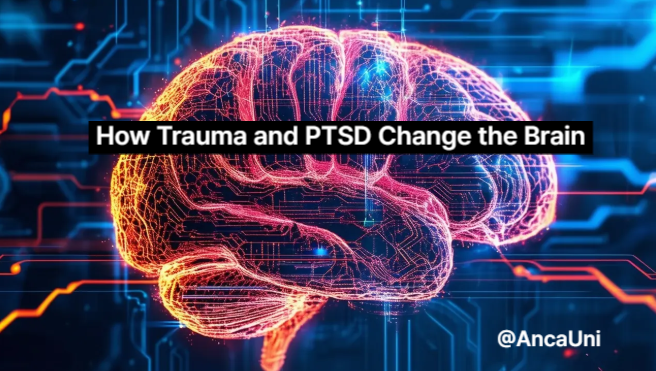
Trauma isn’t just something we experience—it leaves a deep imprint on the brain, reshaping how we think, feel, and respond to the world. When trauma or PTSD (Post-Traumatic Stress Disorder) takes hold, it rewires the brain’s most essential survival mechanisms, keeping us stuck in fear, hypervigilance, or emotional numbness.
Let’s explore how trauma physically alters the brain and why healing requires more than just time.
1. The Amygdala: The Overactive Alarm System
The amygdala is the brain’s emotional command center, responsible for detecting threats and activating the fight-or-flight response. In individuals with PTSD, the amygdala becomes hyperactive, sending constant signals of danger—even when there’s no real threat. This is why people with PTSD may react strongly to seemingly harmless triggers, as their brain perceives them as life-threatening.
2. The Prefrontal Cortex: The Weakened Rational Mind
The prefrontal cortex, the part of the brain responsible for rational thinking, decision-making, and emotional regulation, loses its strength in trauma survivors. This means it struggles to calm the overactive amygdala, making it harder to differentiate between real threats and past memories. As a result, trauma survivors often feel powerless, stuck in cycles of intrusive thoughts, self-blame, or difficulty making decisions.
3. The Hippocampus: The Memory Distortion Effect
The hippocampus, which organizes memories and helps us distinguish between past and present, shrinks in people with PTSD. This leads to fragmented memories, flashbacks, and an inability to place traumatic events in the past. The trauma feels as if it’s happening right now, making it nearly impossible to move forward.
4. The Nervous System: Stuck in Survival Mode
Beyond brain structures, trauma keeps the nervous system in a constant state of fight, flight, or freeze. This means:
- Hyperarousal: Anxiety, insomnia, and jumpiness due to an overactive stress response.
- Hypoarousal (Shutdown Mode): Emotional numbness, dissociation, and fatigue as a coping mechanism.
- Emotional Dysregulation: Intense mood swings, anger outbursts, or deep sadness.
Can the Brain Heal from Trauma?
Yes! The brain has neuroplasticity, meaning it can rewire itself with the right healing practices. Mindfulness, hypnotherapy, energy healing, and trauma-informed therapies help reshape the brain, strengthening the prefrontal cortex and calming the amygdala.
Healing from trauma is not about forgetting—it’s about rewiring. When we integrate body-based healing, guided meditations, and trauma-informed practices, we teach the brain safety, trust, and resilience again.
